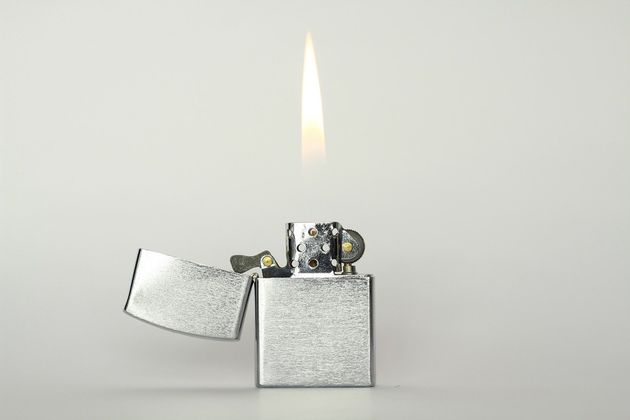The trustworthy Zippo lighter is known for its classic design, fail-safe flame and for the way it symbolises American style, masculinity and rebelliousness

Words by Debika Ray
In 1932 the seeds of the world-famous lighter were planted in Pennsylvania when George G. Blaisdell watched a friend struggle with a clunky Austrian-designed lighter. It required two hands to operate and its thin casing dented easily. However, the lighter did have one huge advantage over all others Blaisdell had seen: its flame stayed reliably lit, protected by an inner chimney.
When Blaisdell went about improving on this, his first prototype kept the chimney to protect the flame from the wind but he made the lighter smaller and sleeker. He also incorporated a hinge to keep the lid connected to the base – and this enabled the lighter to be operated with just one hand. These innovative alterations quickly made his new lighter popular. He christened it the Zippo.
Blaisdell received a patent for the lighter design in 1936 and offered Zippos with a Patagonia-style guarantee, advocating that any faulty Zippo could be sent back to the factory for repairs at the company’s expense. The Zippo’s history was significantly altered by two global conflicts: World War II and the war in Vietnam.
When America joined WWII in 1941 Blaisdell halted all commercial production of Zippo lighters and instead focused on equipping the American troops with lighters. First-grade steel was reserved for military requirement and the Zippo factory was forced to use second-rate metal in production. The lighters was painted with a “black crackle” finish, and the paint helped protect the casing against the elements.
After the war ended, Zippos were made for the public again and by then they were firmly established as an American icon. Men returned from war with their lighters, which had become an essential and stocked in stores for the armed forces, and young boys looked at the Zippo as a sign of maturity and independence. Later, the war in Vietnam the amplified this.
The Vietnam War saw the birth of the customised Zippo. With the help of artists out in Vietnam, soldiers would engrave slogans on their Zippos, often sarcastic or anti-war messages. The principle of customisation caught on, with engravings on metal casings proving popular. Though personalised cases are commonplace – with the company now offering a “design your own” option – the design has remained consistent.
In between the wars in 1956 Zippo released the slim edition, designed to appeal to women. Otherwise very little has changed in the overall design. Even though Zippos have sold in their hundreds of millions, they are still considered a collectible. Those made before the design was patented can now be valued in their thousands, with the most valuable the earliest models from 1933.
Its status as an icon of design has been cemented by its place in popular culture, as well as its collectibility though. When you see a character in a film take out a Zippo you immediately know it’s being used as a signifier that they are self-reliant, perhaps a little anarchistic and most probably cool.
The lighter has been featured in more than 2000 films and TV shows, is often used to authenticate the scene’s historical context, as in Mad Men, and is often a prop that drives the plot in a critical moment. Despite rates of smoking declining in the US, the Zippo remains an iconic symbol of a certain side of American popular culture – and will probably remain so as long as action movie stars keep needing a light.
This article was taken from the ICON archive
Get a curated collection of design and architecture news in your inbox by signing up to our ICON Weekly newsletter















